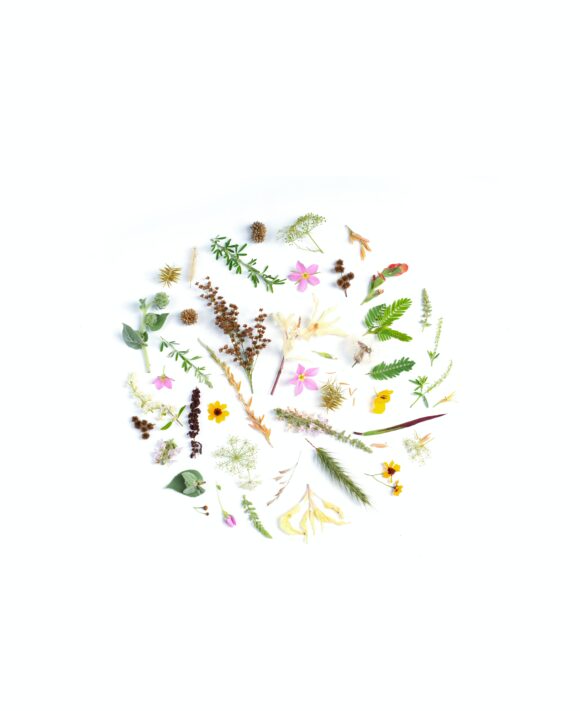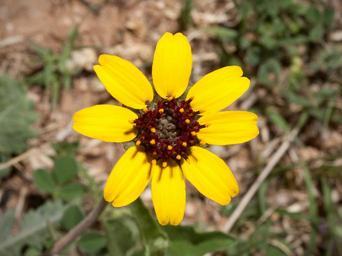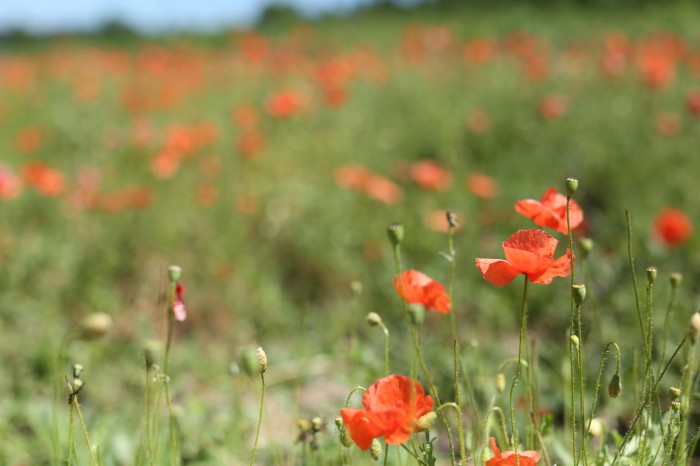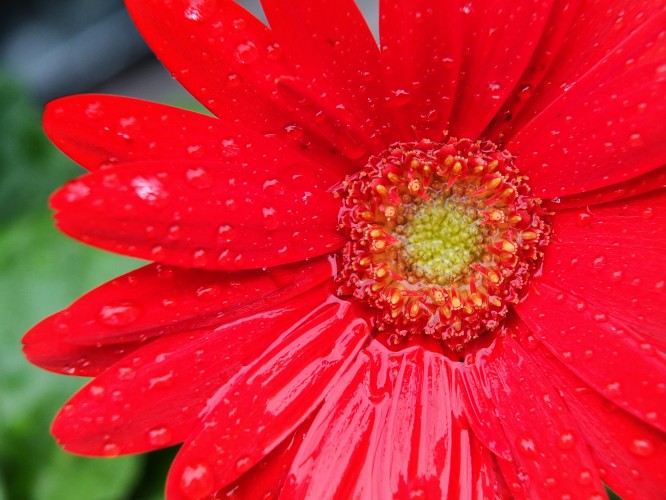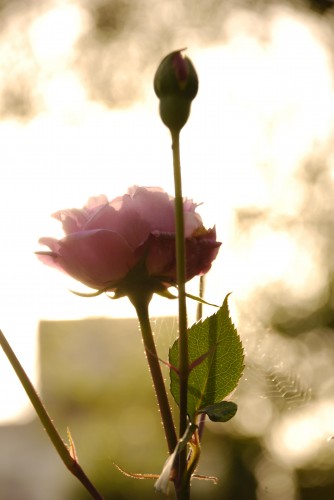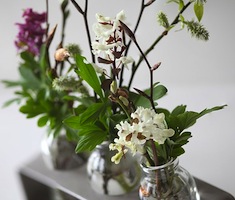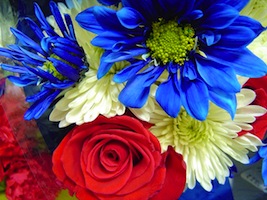Search Results for “”
The Right Flowers to Welcome a Child
This article outlines the recipe for a bouquet to welcome a child. This applies both to welcoming the gift of a newborn baby as well as any sort of welcoming during their younger years.
In the Victorian era, the language of flowers was an essential means of communicating emotions and sentiments. From declarations of love to expressions of condolences, every flower carried a specific message. In this post, I shall elaborate on how a bouquet of flowers could be used to convey a message and provide an example of a bouquet that conveys a specific message.
The message we shall convey through the bouquet is, "May maternal love protect your early youth in innocence and joy!" Continue reading [...]
Daisies Send a Message of Good Cheer
Daisies, both wild and cultivated, have a rich history of folklore and symbolism. The word daisy comes from the Old English "day's eye" because the petals open at dawn and close at dusk. Continue reading [...]
Sweeten your mornings with this… THE CHOCOLATE SCENTED DAISY
Yes, Virginia, chocolate comes in flowers, too! The chocolate daisy is rich in both scent and names. Known as the chocolate flower, green-eyed lyre leaf, lyreleaf green eyes or just plain green eyes, the chocolate daisy is part of the genus Berlandiera lyrata and family Asteraceae, which also includes asters and sunflowers.
Continue reading [...]
Places in the United States to View Spring Wildflowers
We’re well into spring, which means there are opportunities all around to view beautiful wildflowers. Landscapes from the east to the west are bursting with color as pretty poppies, daisies, and other gorgeous flowers cover miles of ground and bring beauty to those who are privileged to walk or drive by.
Where are the best places to view these stunning wild blooms? We’ll tell you, and we’ll let you know a bit about each region you can visit in hopes that you’ll be tempted to go and view the grandeur for yourself. Continue reading [...]
Flowers to Cheer You Up
Have you ever felt down, but been drawn to the beauty of flowers so much that your spirit was lifted? We have. It seems that even in the darkest of times, the delicate appearance of a flower or its sweet fragrance has been all that was needed to perk us up.
We can’t count the number of times we’ve felt blue and then walked past a rose only to be lured in for a sniff. Why? Why do flowers call to us, even when we’re dead sure we’ll never see happier times? Perhaps it’s the symbolism of the flower as something that keeps focus on the good, even when chaos surrounds it. Maybe it is the smell of some, and the way that the fragrance notes affect our brain physically? Continue reading [...]
About the Cheerful Daisy
Do you love daisies? We do. We love them a lot, in fact, and we thought you might too. In fact, we kind of assumed that everyone loves the daisy and the uplifting energy that the flower provides.
When we look at daisies, we can’t help but notice that a huge smile comes across our face. Daisies, in all their forms, bring such happiness and lightness to a day for us. Which are our favorite daisies? It’s hard to narrow a list down to just one. But, we love Gerbera varieties and we go crazy for small common daisies. Both look beautiful in a vase, and they make stunning additions to a garden or a bouquet. Continue reading [...]
The Most Popular Flowers to Give
If you’ve ever wanted to give someone flowers, but didn’t know which ones to choose, we just made things easier for you. We’ve put together a list of some of the most popular blooms that people give to those they love, want to thank, or wish to send good thoughts to. We’ve also noted a bit of information about each one in case you need help determining which flower might be best for your offering. Continue reading [...]
2016 Guide to Thanksgiving Flowers
Thanksgiving is upon us, which means many of you may be wondering which Thanksgiving flowers would be perfect to decorate your Thanksgiving dinner table with. We were contemplating this very thing, so we thought we’d put together a guide to festive flowers for this special holiday.
We’ve highlighted a few of our favorite Thanksgiving flowers, all of which would look stunning at a casual Thanksgiving dinner or a full-blown elaborate affair. The Thanksgiving flowers that we’re suggesting for you will surely look beautiful at your holiday celebration, whether you eat on Thanksgiving-themed paper plates or fine china. Continue reading [...]
Real Estate Agents and Mortgage Officers: Perfect Flowers to Give as Closing Gifts
If you’re in the real estate or mortgage business, you may be wondering about the perfect closing gift for your client. There are many options, from new appliances to gift certificates for dinner, but a classic and thoughtful gift can be a nice arrangement of flowers.
What better way to say “Congratulations,” “Good Luck,” and “Thank You” than sending flowers that will add to the beauty, and positive energy, of your clients’ new home. Continue reading [...]
6 Flowers for When you Can’t Stand Another Second of Winter
If the thought of having to scrape ice off another windshield while the hair in your nostrils slowly freezes makes you want to push the snooze button until spring, it's time for a little flower therapy. Winter can be tough. The days are dark and you might not see the sun between punching the clock in the morning and making your way precariously home through icy streets. It's hard to remember that this too shall melt and your frozen toes will one day walk barefoot on soft, spring grass. When you can't stand one more day of sub-zero weather, try one of these hothouse flowers that will melt your heart (even if they can't do much for your heating bill). Continue reading [...]
3 Ways to Say Happy Armed Forces Day
Men and women of the Army, Navy, Marines, Air Force, Coast Guards, National Guards and Reserves serve our country every day; on the third Saturday in May, we have our change to honor them. While these folks in uniform don't expect to be thanked for their commitment to country in times of peace and times of war, flowers are a great way to let them know that you appreciate their dedication to the cause of peace, liberty and the pursuit of happiness. Here are three great plants to help you salute the service men and women in your life. Continue reading [...]
Mother’s Day Flower Arrangements
As we’ve previously mentioned, flower arrangements for Mother’s Day are a great way to show Mom how much you appreciate her. We’ve recommended several Mother’s Day flower arrangements, and today we wanted suggest some of our favorite garden variety flowers. While roses, orchids and lilies are always a classic and beautiful option, garden-fresh mixed bouquets offer a stunning option that look lush and bountiful. Continue reading [...]
Delightful Daisies: Many Kinds Mean Many Meanings
There are two types of daisy flowers, the Common or Lawn Daisy (the one you'll find populating lawns throughout much of Europe and the Americas), and the other members of the aster family that include chrysanthemums, dahlias, zinnias, gerbera daisies and calendula. So many types of daisies, so many flower meanings. Continue reading [...]
Easter Flowers
Easter flowers celebrate new life, rebirth and hope. Full of religious symbols, Easter flowers (including the Easter lily) warm the hearts of all, not just those who follow the Christian faith. This article discusses the right flowers for Easter, including Easter flower meanings, so you can be sure to send the right message at this important celebration. Continue reading [...]
April Flowers
This flower guide for the month of April gives you the meaning of flowers (the daisy and the sweet pea are the birth month flowers for April), so that if you send a bouquet of flowers to someone who's birthday is in April, you can be sure of the message you're sending with them. Continue reading [...]
Gerbera Daisies
The Gerbera Daisy flower, also sometimes known as the Gerber Daisy, is a bright, colorful, happy flower. Gerber Daisies are as equally at home dressed up in a Gerber Daisy wedding bouquet as they are in a whimsical vase at home on a table - in fact the Gerbera Daisy flower is one flower that is sure to make just about anyone smile. Gerber Daisy colors are so vibrant and beautiful that a Gebera Daisy bouquet is right for almost any occasion. Continue reading [...]
